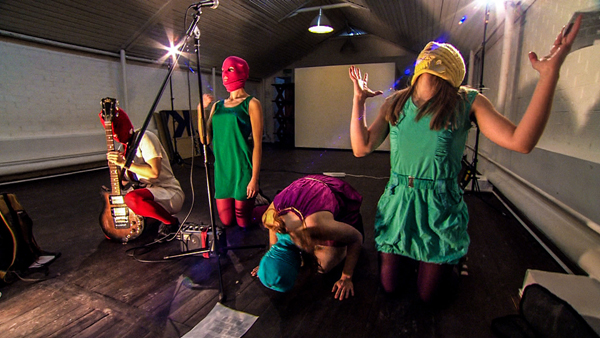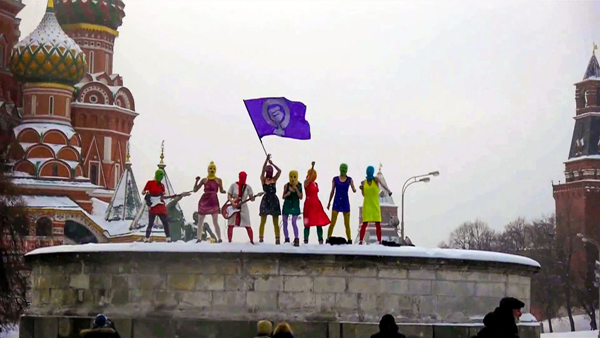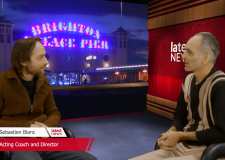Telly Talk: Riot gas

There has been a lot of attention turned towards the attitudes, laws and apparently enforced illegal acts that have been taking place in Russia of late. With calls internationally to boycott the Winter Olympics next year in protest over Russia’s ‘restrictive’ laws regarding its gay population, pressure groups are up in arms and heads are butting all over the world as to what to do next, and what the powers that be are prepared to do next. Cast your mind back though, to when Russia was first accused of human rights violations and restricting the freedom of speech of its citizens and you’ll remember a small performance art group of limited success that hit the news headlines hard with their incarceration. You’ll remember Pussy Riot.
This documentary from HBO picked up a Sundance award for its telling of Nadia, Masha and Katia’s story. From earlier performance/demonstration events, through to rehearsal for the actual guerilla show at the cathedral – the punk prayer – on to parental response, arrest, trial, appeal, and where they are now. It’s unusual to be able to see something this internationally revolutionary through from start to apparent finish.
“The cathedral had been torn down and replaced by a swimming pool”
Also, as much as it shied away from towing any party line, this meant that as well as explaining what had prompted the initial formation of Pussy Riot – an anonymous political performance art and music group – in the sexism and hypocrisy they perceived in their environment in the re-appointment of Putin, the outrage at their storming of the alter in the cathedral equally needed to be contextualised within Russia’s history. The cathedral had been torn down in 1931 and replaced by a swimming pool under Soviet rule, and only rebuilt once glasnost came into play. As much as Pussy Riot are highlighting the union of church and state that makes them suspicious and subject to the patriarchal rule – the Orthodox church have fought hard through decades of difficulties and oppression to be able to now have this symbol of their faith. They’re not going to smile on indulgently while the women don neon balaclavas and mock pray to the Mother to overthrow the status quo.

These are clearly important and evocative issues, questioning Russia’s civil rights record and behaviour, and the temperature left behind by several revolutions taking part within a single 100 year period in one country. People fight hard for what’s important because it’s not a hypothetical idea that they can disappear. The three young women stand in turn in a glass cabinet of the accused, much like feisty butterflies in a Victorian’s parlour. As they stand they all stress that their intent was not to offend the worshippers, and they apologise for that, but to criticise and disrupt what they see as a sexist regime. Their lyrics call to “kill the sexists” and the Orthodox clergy speak ominously about them being witches and how witches used to be burned. This does not have the feel of idle language, and yet the filmmakers sit back and let us draw our own conclusions.
There is lots to talk about, which is what Pussy Riot were after in the first place. They look stunned at the international spotlight they’ve been thrust under. It’s a high pedestal and a long drop. But if you want to know the story so far, this is a very good place to start.
Storyville: Pussy Riot – A Punk Prayer, BBC4, Monday 21 October 2013
Follow me: latestvicky





















